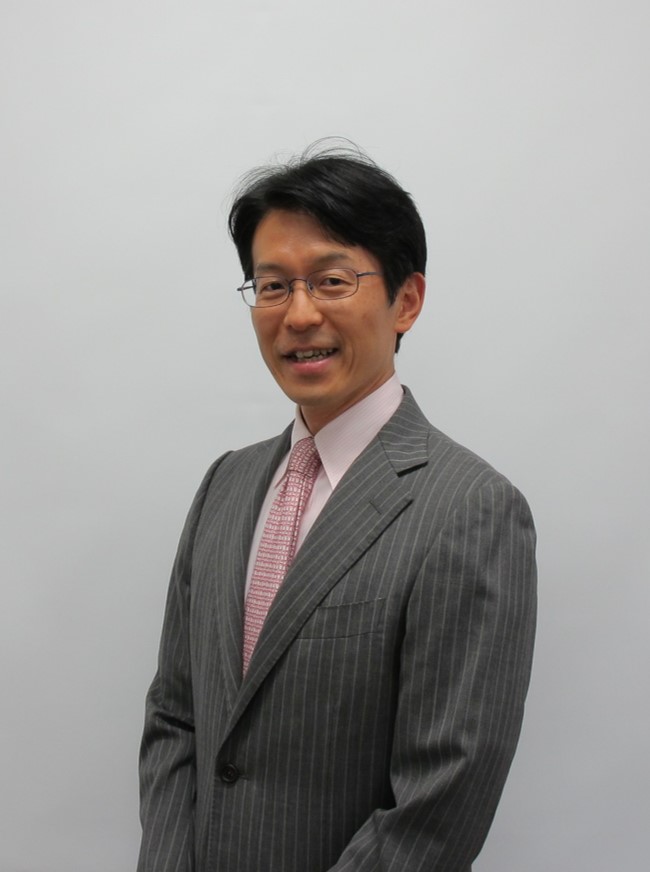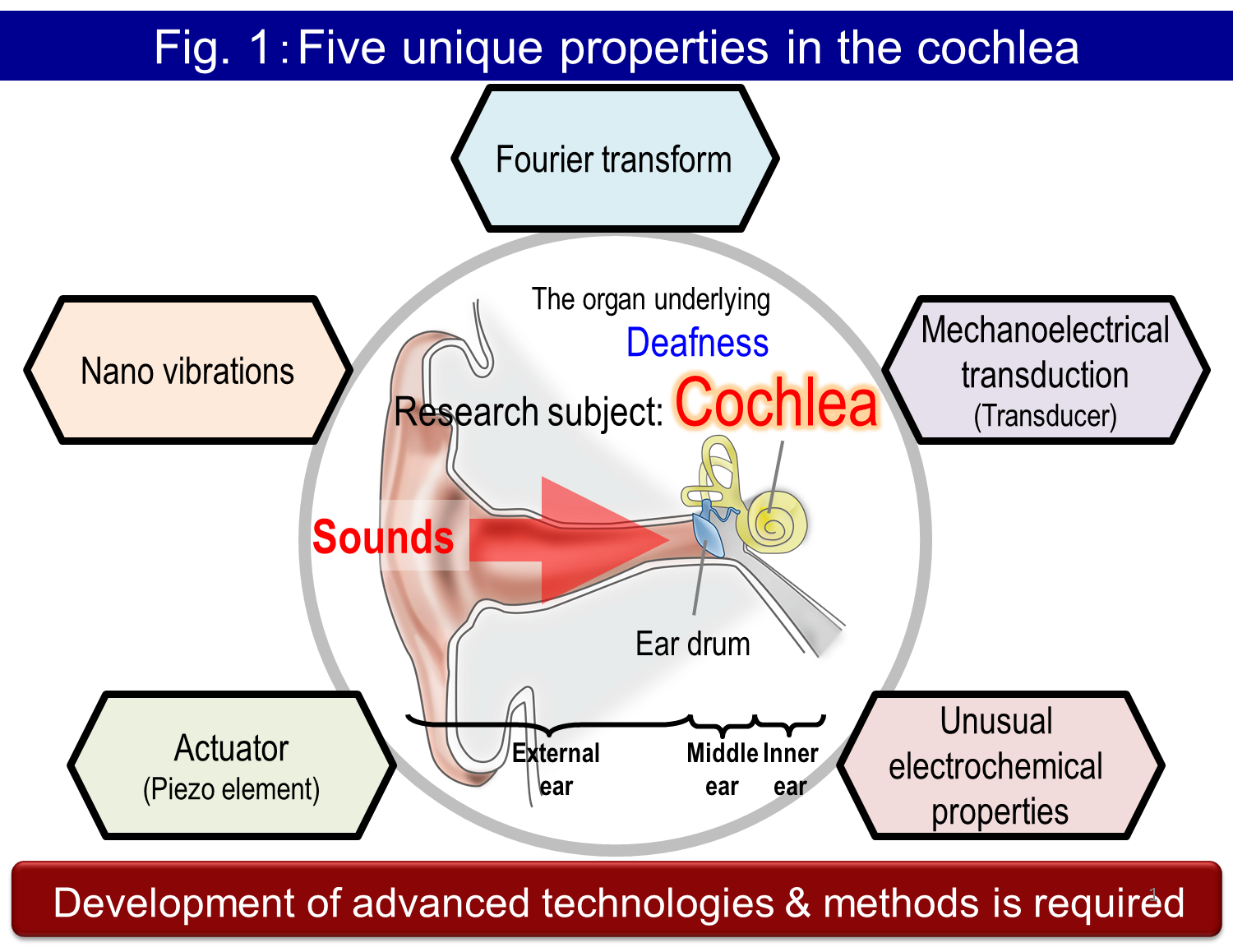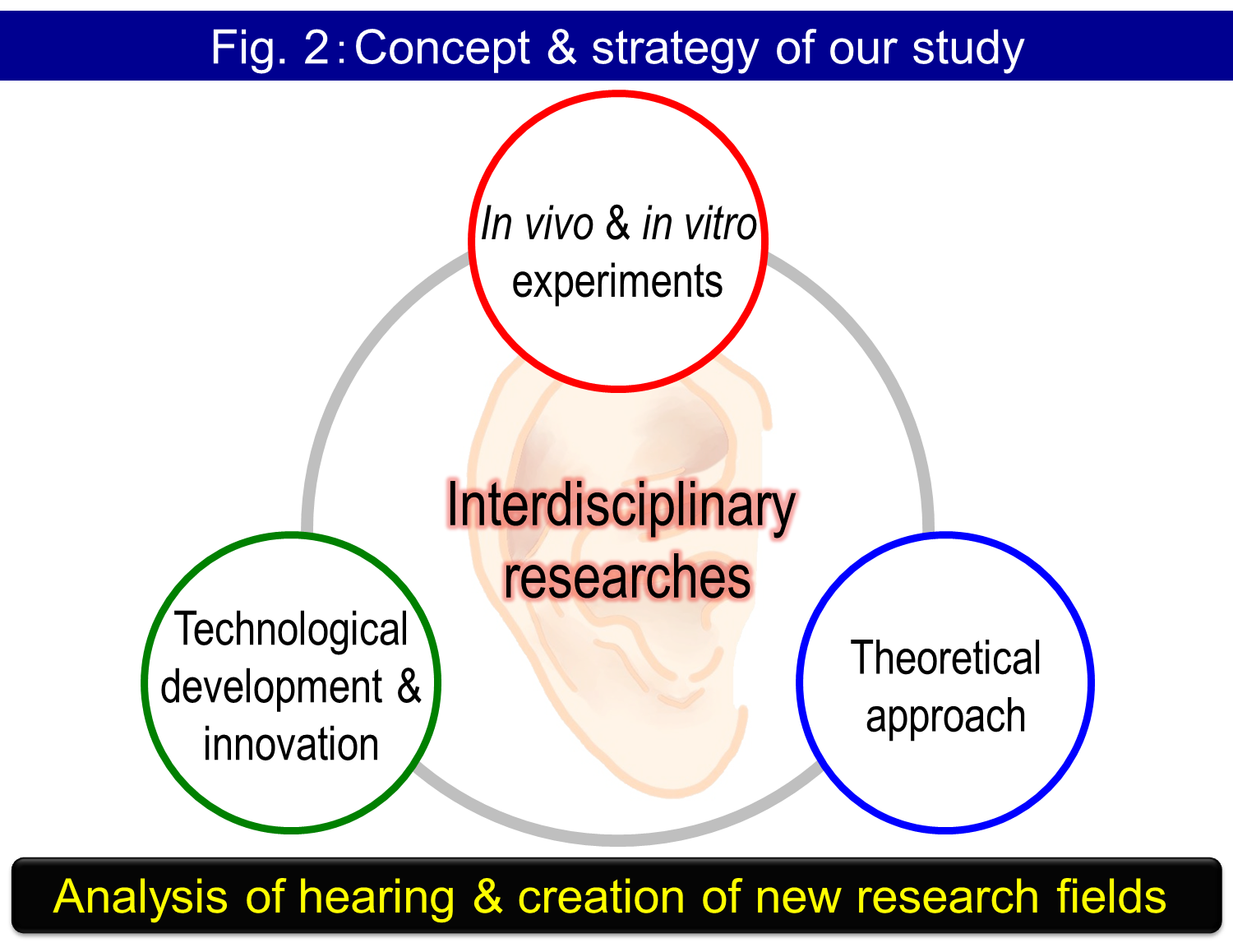A message from Professor Hiroshi HIBINO
 Thank you very much for visiting our homepage. I am Hiroshi HIBINO, the professor in Department of Molecular Physiology, School of Medicine, Niigata University.
Thank you very much for visiting our homepage. I am Hiroshi HIBINO, the professor in Department of Molecular Physiology, School of Medicine, Niigata University.
In your daily life, you hear a variety of sounds. Hearing is essential for humans. Currently, 5-10 % of the global population suffer from deafness at different degrees. Majority of refractory hearing disorders stem from damages in the ‘cochlea’ of the inner ear, a peripheral organ for hearing (Fig. 1). We wish to contribute to overcoming the diseases and therefore study the mechanisms underlying functions of the cochlea.
Sounds are served as vibrations of the air. To perceive the acoustic stimuli in our computer, brain, the mechanical energy must be transduced to electrical signals. The transduction occurs in the cochlea. Your hearing can sense a buzzing of a mosquito that flies 3 m away from you as well as accept a jet engine sound emitted form an aircraft nearby; the difference in sound pressure levels is 1,000,000-fold. Furthermore, you can distinguish only 0.0025-octave difference whereas your sensation covers 10 octaves, which exceeds the frequency range of a piano.
 Such remarkable properties of the audition depend primarily upon the elements
in the cochlea. These include a particular membrane that receives the acoustic
energy as nanometer-scale vibrations, a Fourier transform element that
analyzes sounds in a frequency domain, a transducer that plays key roles
in the mechanoelectrical transduction, an actuator that amplifies the signals,
and a battery that is based on ion concentrations (Fig. 1). Of note, these elements are artistically coordinated and orchestrated, producing a beautiful ‘harmony’ in vivo.
We attempt to not only identify the elements but also a blueprint for a precision machine, ‘cochlea’.
Such remarkable properties of the audition depend primarily upon the elements
in the cochlea. These include a particular membrane that receives the acoustic
energy as nanometer-scale vibrations, a Fourier transform element that
analyzes sounds in a frequency domain, a transducer that plays key roles
in the mechanoelectrical transduction, an actuator that amplifies the signals,
and a battery that is based on ion concentrations (Fig. 1). Of note, these elements are artistically coordinated and orchestrated, producing a beautiful ‘harmony’ in vivo.
We attempt to not only identify the elements but also a blueprint for a precision machine, ‘cochlea’.
 The membrane stimulated by sounds moves up and down by only less than 10
nm. As you can predict with this scale, the vital phenomena in the cochlea
are very subtle. To visualize the events and clarify the complicated mechanisms
for cochlear functions, development of the state-of-the-art technologies
or methodologies is mandatory. Furthermore, it is necessary to not only
analyze the phenomena in the molecular, cellular, tissue, and organ levels,
but also integrate all of them. For such purpose, we use theoretical approaches
in addition to experimental methods in molecular biology, histology, and
physiology (Fig. 2). Accordingly, we conduct interdisciplinary researches together with engineers (Fig. 2). Through these activities, we are working on electrochemical profiles
of the cochlea and ‘mechanobiology’ subjected to investigation of physiological
significance of physical signals. We also intend to establish a novel research
field for ‘biological interphase’, a narrow space between the plasma membrane
and bulk extracellular solution. In addition, we have recently developed
a system for the in vivo real-time detection of ‘local’ pharmacokinetics and pharmacodynamics.
This drug-microsensing technology is applicable to a broad array of organs
including the cochlea and brain.
The membrane stimulated by sounds moves up and down by only less than 10
nm. As you can predict with this scale, the vital phenomena in the cochlea
are very subtle. To visualize the events and clarify the complicated mechanisms
for cochlear functions, development of the state-of-the-art technologies
or methodologies is mandatory. Furthermore, it is necessary to not only
analyze the phenomena in the molecular, cellular, tissue, and organ levels,
but also integrate all of them. For such purpose, we use theoretical approaches
in addition to experimental methods in molecular biology, histology, and
physiology (Fig. 2). Accordingly, we conduct interdisciplinary researches together with engineers (Fig. 2). Through these activities, we are working on electrochemical profiles
of the cochlea and ‘mechanobiology’ subjected to investigation of physiological
significance of physical signals. We also intend to establish a novel research
field for ‘biological interphase’, a narrow space between the plasma membrane
and bulk extracellular solution. In addition, we have recently developed
a system for the in vivo real-time detection of ‘local’ pharmacokinetics and pharmacodynamics.
This drug-microsensing technology is applicable to a broad array of organs
including the cochlea and brain.
We enjoy daily experiments very much in our lab. Please feel free to contact us if you have an interest in our works. Although we construct or fabricate several instruments and equipment by ourselves, we can propose a number of different projects that do not require the particular techniques for you. Young scientists who would have surprising ideas are welcome.
Hiroshi HIBINO


